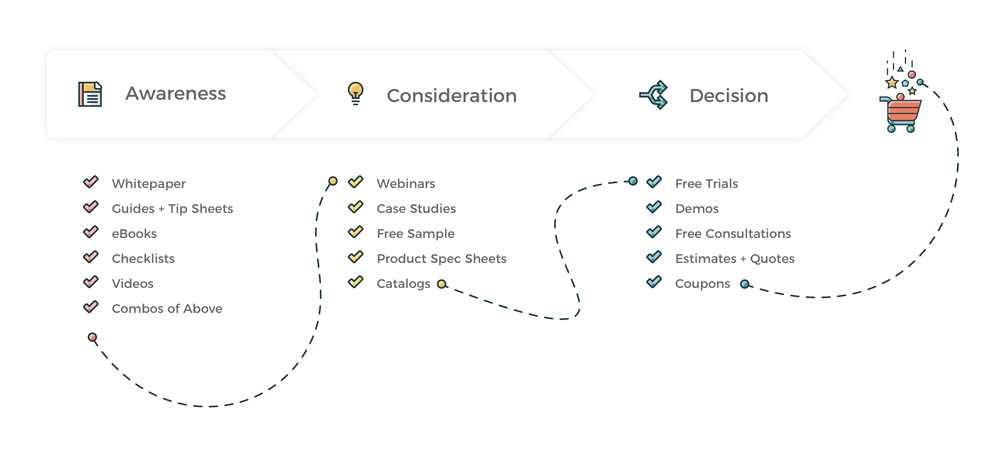
Knowing where to start can be tricky when you’re planning a new digital marketing campaign. Although it might be tempting to jump right in, successful campaigns begin with thoughtful, strategic planning.
When you identify your marketing objectives from the start, you will have a better roadmap for planning and measuring success.
Well before you dig in and start thinking about ad copy, graphics, and writing content, you should work through these foundational aspects of your messaging and audience planning for higher ROI.
When you identify your marketing objectives from the start, you will have a better roadmap for planning and measuring success.
Well before you dig in and start thinking about ad copy, graphics, and writing content, you should work through these foundational aspects of your messaging and audience planning for higher ROI.
Step 1: Lay a foundation
The term we use for planning portion of TBH Creative’s marketing management process is the “blueprint phase.” This initial step in the process is when you should evaluate your goals and prioritize the work you and your team will be doing. Put all of your notes down in writing so you can reference back to your blueprint document throughout the campaign.Goal: Gather information to inform the creation of your strategy.
Activities often involved in the blueprint phase include:
- Researching and learning
- Defining success broadly
- Assessing and organizing content
- Conducting competitor analysis
- Doing keyword research
Step 2: Define your target audience
It’s difficult to identify the appropriate marketing objectives if you aren’t aware of what your target audience wants and needs. Many companies bypass this step, assuming they understand their audience enough to make an educated guess. However, you may be surprised at what you learn when you take the time to do a little persona research.
Goal: Define the target audience personas and understand the buyer’s journey.
Activities often involved in defining your target audience include:
Goal: Define the target audience personas and understand the buyer’s journey.
Activities often involved in defining your target audience include:
- Prioritizing and narrowing in on your main audience focus
- Doing research online and/or conducting surveys
- Interviewing stakeholders
- Compiling and analyzing research results
Step 3: Identify your marketing campaign content needs
Once you’ve figured out your goals (step one) and what your target audience needs (step two), then you’re ready to think about campaign direction and messaging. Industry data shows that certain types of content tend to resonate best during different stages of a buyer’s journey.
Goal: Determine marketing opportunities and make a content plan that incorporates new and/or existing campaign assets.
Activities often involved in assessing and determining content needs often include:
- Reviewing campaign ideas to see if they complement persona findings
- Developing additional campaign ideas based on target persona research
- Make a plan to repurpose content or create new assets for the campaign
- Map out content that fits each stage of a buyer’s journey
- Determine if a phased-approach is appropriate, and, if so, which items should be completed during each part of the campaign
Step 4: Create a promotion plan
Once you have a good understanding of your audience targets, marketing goals, and content assets, you can start to think about promotion. Depending on your audience and content types, you may want to promote your new campaign to subscribers on your email list, create paid ads on social media, add URLs to printed advertisements or brochures, etc.Goal: Identify campaign promotion activities, including how to incorporate the new campaign into existing marketing materials.
Activities often involved in creating a campaign promotion plan may include:
- Listing all promotion activities and how/if they fit with the campaign
- Considering any new ideas
- Confirming and documenting your promotion plan
- Defining responsibilities
Pro-tip: Don’t forget about your website. During your marketing strategy planning, consider how to incorporate the new assets from your campaign into the website most effectively. For example, a niche campaign may perform better on an interior, topic-specific page than as a general call-to-action (CTA) on the homepage.
Step 5: Document your plan
The final step to creating a successful marketing plan is to write it down. Document the campaign goals, audience research findings, content plan, and promotion activities. Then, assign dates and responsibilities each step of the way.Working from a common starting point will keep you and your team on the same page throughout the campaign set up. It will also help establish realistic timelines for completing campaign elements based on resources and priorities.
Goal: Confirm the work, details, calendar, and overall plan.
Here are some tips to make documenting your go-to-market (GTM) plan easier:
- Determine the campaign pace based on needs and resources
- Prepare a campaign calendar with mid-point deadlines, including meeting frequency and reporting plans
- Look at broad goals and create SMART goals based on the documented plan
Let’s talk about your digital marketing management
